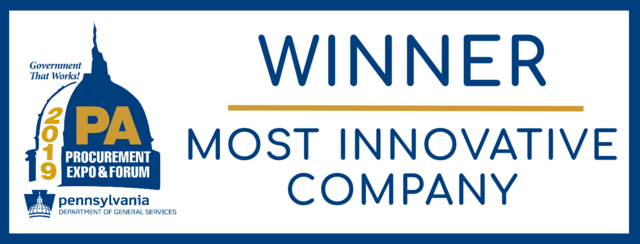

Sign up for Procurated
Procurated helps public sector buyers make more informed buying decisions through peer reviews. It is completely free to use.
Write and read reviews, find new suppliers, manage vendor performance and more!
4 Key Elements of Complex IT Procurement
In a digital age, the intersection of government and technology is more critical than ever. From cybersecurity to automated work processes, tech touches every area of the public sector, and adoption of new, advanced technology is rapid and evolving constantly.
By 2024, it is predicted that 60% of government AI and data analytics investments aim to directly impact real-time operational decisions and outcomes. (Gartner) With sensitive data at risk, and the looming threat of cybersecurity attacks on the government, procurement of IT software and services is a complex task. So how do procurement officials confidently and successfully purchase IT software, hardware, and services that meet the need of their departments?
James Crenshaw of Washington, DC’s Office of Contracts has the answer with his Four Key Elements of Successful IT Procurement.
James Crenshaw of Washington, DC’s Office of Contracts has the answer with his Four Key Elements of Successful IT Procurement.
Partnering with the Program Office as Soon as Possible
“We say no matter where you’re doing procurement – the work starts, the acquisition starts, when the need is established”, James Crenshaw opens as he begins to define the value in partnering with program offices as soon as possible. Early collaboration allows procurement officials to ask questions and begin to dive into market research that is necessary for an efficient process.
“Everything that we do is for our tax paying citizen”, he says. “So, the most important thing is that we’re putting the proper software or hardware or utilizing the proper service that is going to be most beneficial to our department, in turn to our tax paying citizen.”
Building a Strategic Scope
Collaboration doesn’t begin and end with the program office. Working with IT departments to build a strategic scope helps outline the details of the need in a way that will eventually lead to procuring the right software or service. James emphasizes that detailed scopes create a clearer image for potential suppliers leading to more competition. This competitiveness encourages innovative solutions and provides space for them to emerge.
“The goal is to be able to write a scope in a way that potential bidders can understand the specifics of what we need… to provide the need, the service or hardware we are looking for”, he says.
“The goal is to be able to write a scope in a way that potential bidders can understand the specifics of what we need… to provide the need, the service or hardware we are looking for”, he says.
Period of Performance
Tech is a fast-paced industry, with new software and solutions emerging quicker than ever before. This adds another challenge for procurement officials, who must assess and predict if the technology they are looking to acquire is sustainable throughout time. Is this software or hardware only relevant now, or will it last?
While the annual nature of governmental contracts provides a layer of protection against aging technology, procurement officials and contract specialists can protect their organization through the specific language of the agreement. Adding terms to the contract that let suppliers know that the buyer will have the power to add or remove services as seen fit increases transparency on both sides and helps combat paying for out of date equipment and services.
While the annual nature of governmental contracts provides a layer of protection against aging technology, procurement officials and contract specialists can protect their organization through the specific language of the agreement. Adding terms to the contract that let suppliers know that the buyer will have the power to add or remove services as seen fit increases transparency on both sides and helps combat paying for out of date equipment and services.
Demos and Customer Interviews
After identifying the need, building a scope, and outlining a period of performance, the next step in the procurement process leads to selecting a potential supplier. Beyond demos at conferences and other large industry events that expose procurement officials to organizations offering the latest technology, James underscores the significance of customer interviews and peer reviews, looking to answer questions like:
- How user friendly is the software?
- How easy is it to upgrade?
- What is the company’s responsiveness to crisis like?
- Can I trust their customer service representatives?
These questions reveal the accountability of a potential supplier or service provider, which is essential when choosing a reliable IT supplier.
“We are always working to protect our systems because if it hits our systems, it’s ultimately going to hit our citizens”, James says.
Published on Apr 04, 2022

